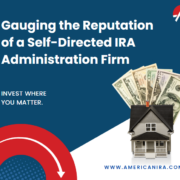Self-Directed IRA Real Estate Investing Options
When you use a Self-Directed IRA for the purposes of investing in real estate, that alone sounds like a tremendous boost to your retirement portfolio. Real estate, after all, is an asset class that can generate passive income and store value even when the stock market is down. But “real estate” is also a big, vague term. It can refer to single-family homes or large, multi-family units. And anyone who’s ever owned one of each can probably tell you how different these assets can be.
That’s why today, we’re going to explore the full range of real estate investment options that are possible when you use a Self-Directed IRA.
The Options of Real Estate Investing with a Self-Directed IRA
While it may seem impractical to invest in large properties like real estate within a Self-Directed IRA, you can borrow money within a Self-Directed IRA with non-recourse financing. You can then use a property manager to collect rent, pay expenses, and handle the property. The profit from the real estate can then go into your account tax-free or tax-deferred, depending on your individual situation and the type of account you chose.
What Kinds of Real Estate Properties Can You Own in a Self-Directed IRA?
Let’s explore some of the most common types of real estate investments investors can hold:
- Raw land. Raw land can be a low-maintenance investment that investors turn around and sell when demand has gone up. Raw land doesn’t generate rental income, however, which is a key consideration for anyone with a Self-Directed IRA or investing through a retirement account.
- Single-family properties. A single-family property is typically a single-family house, and this can generate income when the rent is higher than the mortgage.
- Multi-family properties. Like a duplex, can have multiple sources of rent, which can potentially make it easier to earn a profit on the rent against the expense of the mortgage.
- Commercial properties. Mean renting space to businesses, franchises, and the like.
- Real estate development companies. Can be another type of Real Estate Investing in which you hold private stock through a Self-Directed IRA while the company itself works on the real estate.
- REITs. Or real estate investment trusts, are common investments that many people can make directly through a brokerage. These REITs can make the process of investing in real estate more akin to buying a stock on the stock market, which in turn can make your real estate assets far more liquid than holding a physical property.
The Benefits of Investing in Real Estate
With all of these options on the table—and there are many more—it leads to a key question for most people who are considering a Self-Directed IRA for real estate. Why real estate? What are the benefits to working in real estate?
The first benefit is that real estate can generate a substantial income, which is important for people who want to invest for retirement. Consistent income coming in can provide a degree of stability to a portfolio that isn’t available through more speculative investments, such as stocks that don’t pay dividends.
Investing in real estate also gives access to an asset class that may or may not be correlated with what happens in the stock market. This means that even while an investor who is in 100% stocks may panic when there is a dip in the market, a real estate investor may not be so worried.
Interested in learning more about Self-Directed IRAs? Contact American IRA, LLC at 866-7500-IRA (472) for a free consultation. Download our free guides or visit us online at www.AmericanIRA.com.









